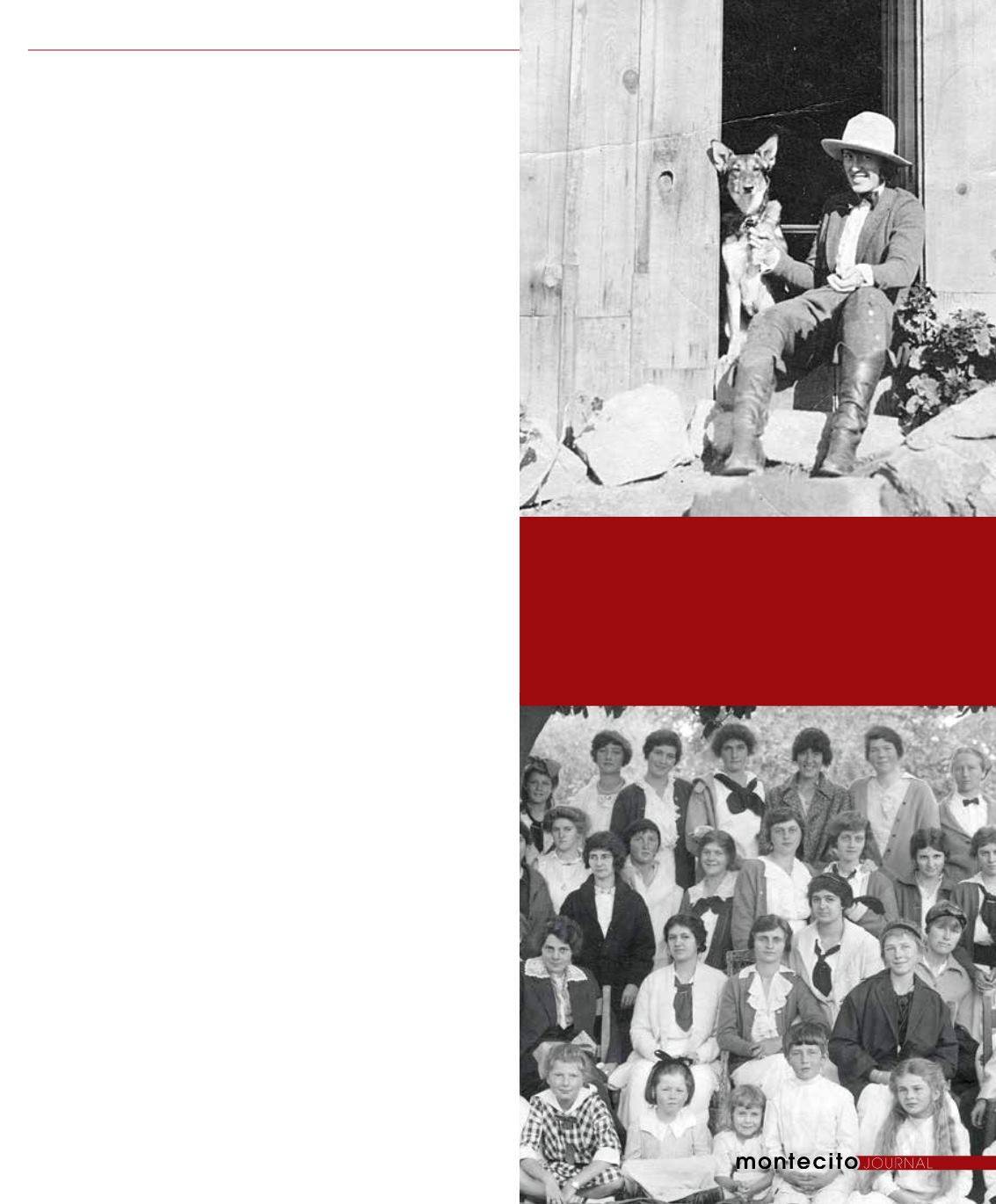
60
winter
|
spring
roofed, stone wait station at the Mission tram stop. His crews also
uncovered and repaired old landmarks south of the Mission, cleaning
and restoring the old reservoirs and removing brush. They repaired the
walls of the outlying ruins of the filter house and grist mill.
RUTH
T
he Blacks began entertaining at their Spanish hacienda almost
as soon at the walls were up and long before the vines covered
the walls. In July 1914, their 17-year-old daughter, Ruth, gave an
Independence Day party for – as the
Morning Press
called them – “the
sub-debutant set.” The cloister was decorated in red, white, and blue
and illuminated with multi-colored electric lights. The rooms were
“fragrant with a profusion of roses, and Hester’s orchestra played an
alluringly rendered dance program.” The guest list included all the
old names: Edwards, Hammond, Waterman, Driver, Rock, Doulton,
Ballard, Austin, Voorhees, and De Forest.
Ruth attended Miss Gamble’s School for Girls and when it closed
in June of 1914, Clarence joined with other concerned parents to
create the Santa Barbara School for Girls. The new school directors
pledged to provide “a sound, sane education” for their daughters.
Clarence, along with George Owen Knapp, E.D. Wetmore, and Dr.
J.H. Poore, purchased the former home of William Alexander at 1624
Garden Street and leased it to the school.
All of the teachers were Radcliffe graduates, and the school offered
a liberal arts education but included courses in mathematics along with
Cicero, Latin, and music. The uniform was a dark-blue woolen dress
cut in Peter Thompson style, but white sailor blouses were permissible.
Rules stated that the girls could wear no jewelry or overly fancy dresses,
nor could they wear lipstick or cheek rouge. Magazines would rot the
brain and were strictly forbidden.
These attempts to instill in Ruth the manners and habits of a
proper young lady, however, came to naught. Ruth had fallen in love
with the Romantic West. Her bedroom at
El Cerrito
contained no pink
frills; instead, leather chaps and iron horseshoes adorned the walls. A
tepee sat in the corner and an Indian blanket covered a window. She
had a line-shack in one corner of the estate complete with pot-bellied
stove and other Western paraphernalia. And she adored the cowboys of
MOGULS
&
MANSIONS
(top) Ruth had a line shack built on the
El Cerrito
property;
(bottom) Ruth’s parents sent her to Miss Gamble’s School for Girls.
This June 1914 school photo shows Ruth standing top row, 5th from
right. Her friend, Lucia MacKinlay, with whom she would take a
camping road trip in 1919, stands one row down and 4wth from left.
(Courtesy Santa Barbara Historical Museum)


